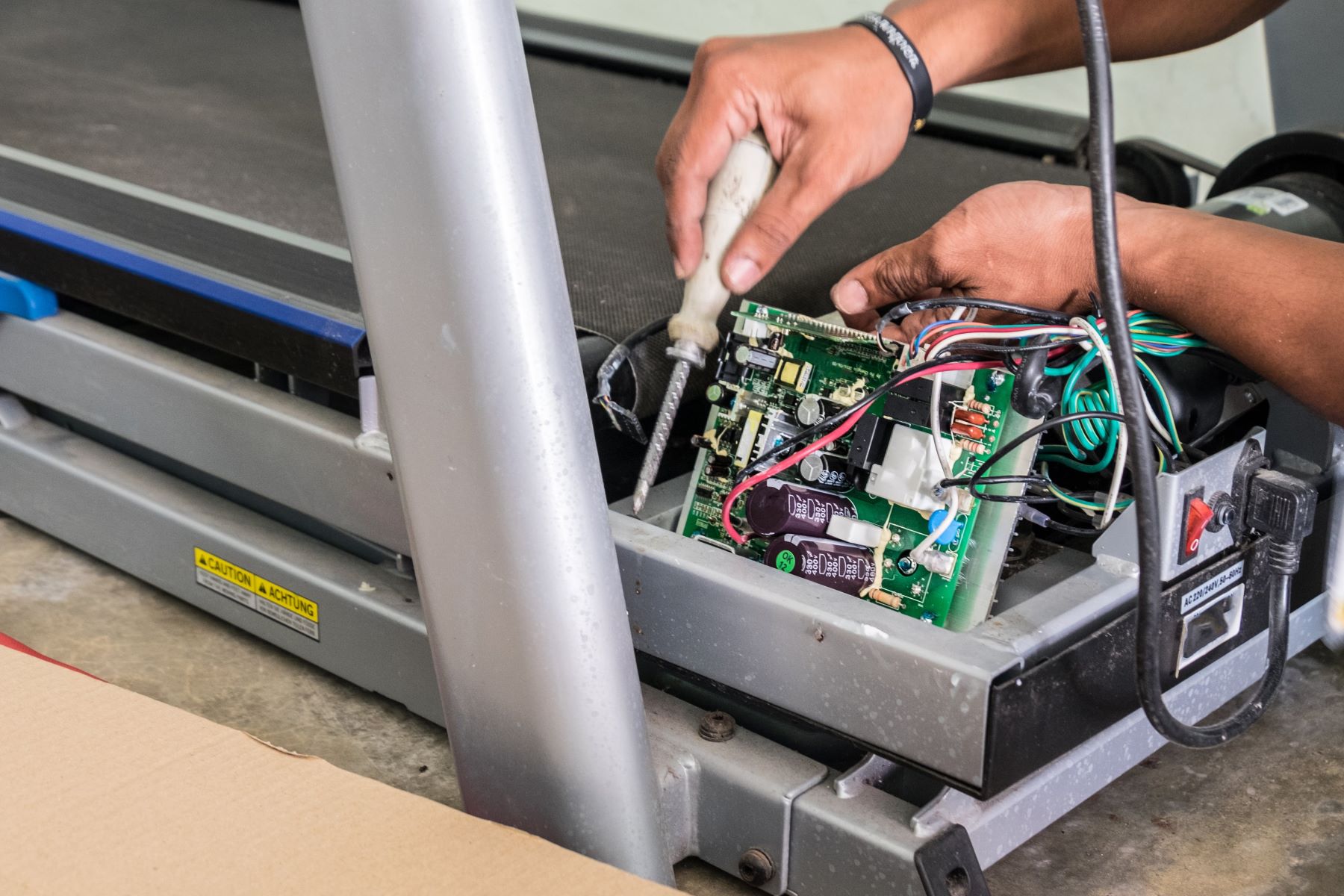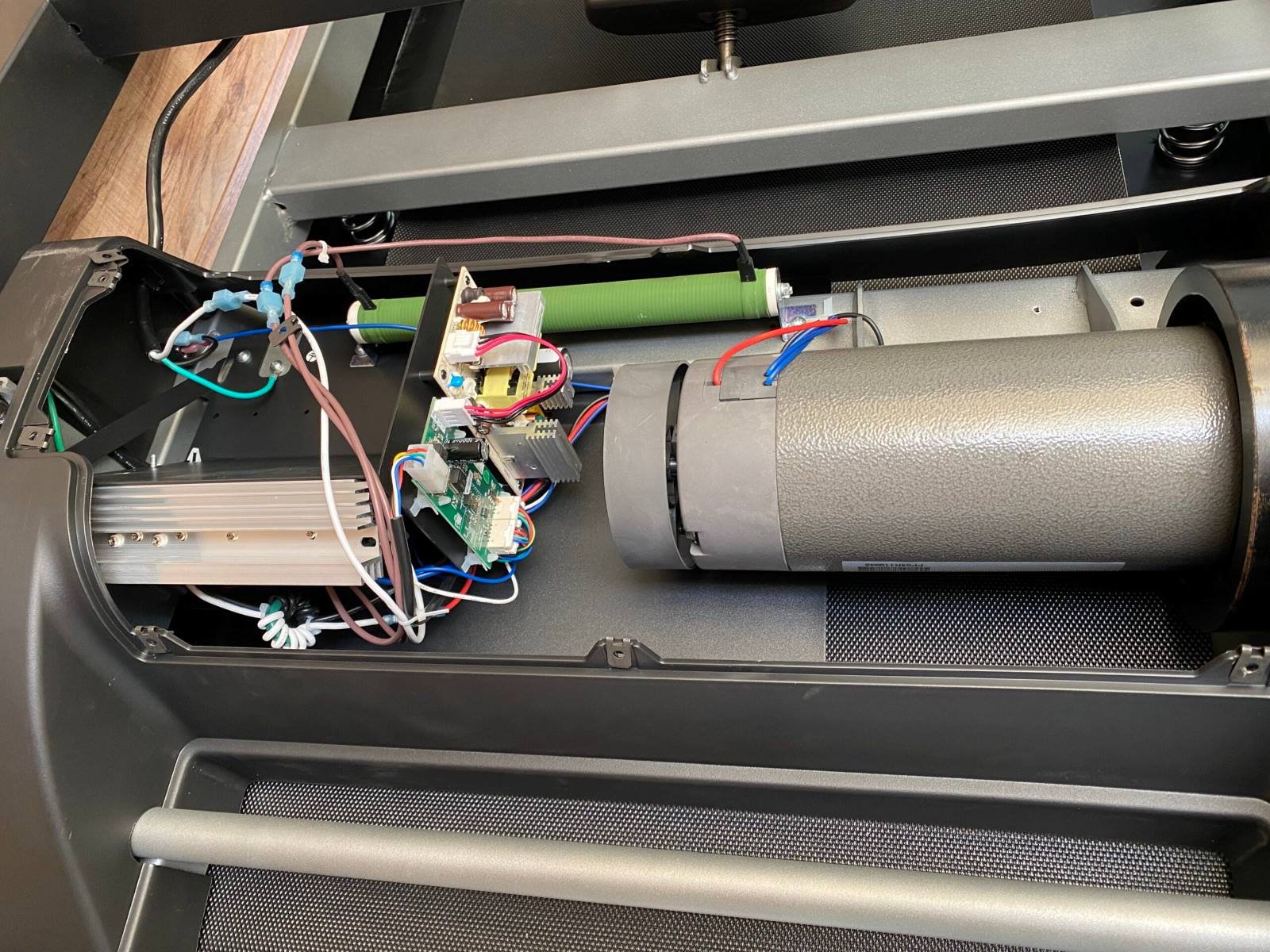

Featured
What Is The Hedonic Treadmill?
Published: August 12, 2023
Discover the concept of the hedonic treadmill and how it affects our pursuit of happiness. Explore why it's the featured topic in psychology today.
Introduction
The pursuit of happiness is a universal goal shared by people across cultures and generations. We strive to find joy, contentment, and fulfillment in our lives. However, have you ever wondered why it seems difficult to maintain a lasting state of happiness? This is where the concept of the hedonic treadmill comes into play.
The hedonic treadmill is a psychological phenomenon that suggests that humans have a natural tendency to adapt to changes in their lives, both positive and negative, and return to a baseline level of happiness. It is as if we are constantly chasing happiness, only to find ourselves back where we started.
At its core, the hedonic treadmill is based on the idea of hedonic adaptation. This theory suggests that our happiness levels are influenced by our internal set point, which is a predetermined level of happiness that we tend to return to despite external circumstances. This means that even when we experience positive events, such as getting a promotion or buying a new car, we may initially feel a surge of happiness, but over time, our happiness levels will revert back to our baseline.
Furthermore, the hedonic treadmill also highlights the impact of material possessions and wealth on our happiness. We often believe that acquiring more possessions or accumulating wealth will lead to long-term happiness. However, research shows that while material gains may provide a temporary boost in happiness, this effect tends to fade over time as we adapt to our new circumstances. This explains why the thrill of purchasing a new gadget or designer item may wear off sooner than we expect.
Definition of the Hedonic Treadmill
The hedonic treadmill is a psychological theory that describes the human tendency to quickly adapt to positive or negative changes in our lives and return to a relatively stable level of happiness. It suggests that our happiness is not determined by external factors, such as wealth or possessions, but rather by our internal set point.
To understand the concept of the hedonic treadmill, it’s important to recognize the role of hedonic adaptation. This is the process by which we become accustomed to new positive or negative stimuli and, as a result, experience a decrease in the emotional impact of these stimuli over time. For example, winning the lottery may initially cause a tremendous surge of happiness, but as we adapt to our new financial status, that initial elation fades and we return to our previous level of happiness.
The term “treadmill” is used to illustrate the idea that our pursuit of happiness is an endless cycle, much like running on a treadmill. We may strive for external achievements or possessions in the hopes of attaining long-term happiness, but the reality is that these external factors only provide temporary boosts in happiness. As we adapt and become accustomed to these new circumstances, the initial happiness dissipates, and we are left longing for the next source of happiness.
The hedonic treadmill theory challenges the commonly held belief that material possessions and external achievements are the key to lasting happiness. It suggests that our happiness levels are largely influenced by our internal set point, which is a relatively stable level of happiness that we tend to return to over time. This set point is believed to be partially determined by genetic factors and partly influenced by our life experiences and social environment.
Understanding the hedonic treadmill can provide insight into our own pursuit of happiness and help us manage our expectations. It reminds us that true happiness may not be found in the external world, but rather in our mindset and our ability to appreciate and savor the present moment. By recognizing the transient nature of material gains and focusing on cultivating internal qualities such as gratitude, compassion, and personal growth, we can break free from the cycle of the hedonic treadmill and find a more sustainable and fulfilling sense of happiness.
Understanding Adaptation and Set Point
One of the key elements of the hedonic treadmill theory is the concept of adaptation and the existence of a set point for happiness. Adaptation refers to our ability to adjust and become accustomed to new circumstances, whether they are positive or negative. It is an innate psychological mechanism that helps us maintain a stable emotional state.
The set point, on the other hand, is the baseline level of happiness to which we tend to return after experiencing significant life events. This set point is unique to each individual and is believed to be influenced by a combination of genetic factors and life experiences.
When positive events occur in our lives, such as getting a raise or falling in love, we initially experience a surge of happiness. However, as we adapt to these new circumstances, the initial boost in happiness diminishes, and we return to our baseline level of happiness. Similarly, when negative events occur, such as the loss of a job or a breakup, we may experience a period of sadness or distress, but over time, we adapt and return to our baseline level of well-being.
This phenomenon of adaptation can be seen in various aspects of our lives. For example, research has shown that individuals who have experienced major life events, such as winning the lottery or becoming paralyzed, tend to adapt to their new circumstances and return to their pre-event level of happiness. This suggests that our external circumstances have a limited long-term impact on our happiness.
Understanding the concept of adaptation and the existence of a set point is important because it challenges our traditional beliefs about the sources of happiness. It suggests that our well-being is not solely determined by external factors, such as wealth, possessions, or achievements. While these external factors may provide temporary boosts in happiness, the effect eventually wears off as we adapt to our new circumstances.
Instead of constantly striving for external achievements or material possessions, we should focus on cultivating internal qualities and practices that promote long-term well-being. This can include gratitude, mindfulness, nurturing relationships, and pursuing personal growth and meaningful experiences. By shifting our focus from external sources of happiness to internal ones, we can escape the endless cycle of the hedonic treadmill and find a deeper and more sustainable sense of well-being.
The Role of Material Possessions and Wealth
In our relentless pursuit of happiness, we often believe that acquiring material possessions and accumulating wealth will lead to long-term satisfaction and contentment. However, the hedonic treadmill theory suggests that the impact of material possessions on our happiness is temporary, and we quickly adapt to these new circumstances.
Studies have shown that while material gains may initially provide a boost in happiness, this effect tends to fade over time. This phenomenon can be explained by the concept of hedonic adaptation, wherein we become accustomed to our new possessions and their novelty wears off. That shiny new car or expensive gadget may bring temporary joy, but eventually, it becomes the new normal and no longer provides the same level of happiness.
Furthermore, the constant pursuit of material possessions often leads to a never-ending cycle of desire and consumption. We believe that if we just have that one more thing, we will finally attain lasting happiness. However, this mindset traps us in a perpetual state of dissatisfaction, always craving the next purchase or upgrade.
Moreover, material possessions and wealth can sometimes have negative consequences on our well-being. The pressure to maintain a certain lifestyle or meet societal expectations can lead to stress, anxiety, and a constant need to “keep up with the Joneses.” The pursuit of material wealth may also come at the expense of other aspects of our lives, such as meaningful relationships, personal growth, and experiences that bring true fulfillment.
While it is true that having a certain level of financial stability can contribute to a sense of security and freedom, research suggests that beyond a certain threshold, the correlation between wealth and happiness becomes less significant. Once our basic needs are met, the pursuit of additional wealth may have diminishing returns in terms of our overall well-being.
Instead of relying solely on material possessions and wealth to find happiness, it is important to shift our focus towards more meaningful and fulfilling aspects of life. This can include nurturing relationships, pursuing personal growth, engaging in activities that align with our values and passions, and contributing to the well-being of others.
By recognizing the limitations of material possessions and wealth in bringing lasting happiness, we can break free from the cycle of the hedonic treadmill. We can embrace a more balanced approach to life, where we prioritize experiences, relationships, personal development, and the pursuit of a life that is aligned with our values and brings true fulfillment.
The Impact of Life Events on Happiness
Life is a series of events, both big and small, that can have a significant impact on our happiness. From joyful milestones to challenging setbacks, these events shape our experiences and emotions. However, the hedonic treadmill theory suggests that the effect of these life events on our happiness is not as long-lasting as we may expect.
Positive life events, such as getting married, achieving career success, or having a child, often bring a surge of happiness. These events are commonly associated with increased social support, a sense of accomplishment, and a feeling of purpose. However, research shows that the initial boost in happiness tends to be short-lived, as we quickly adapt to these new circumstances and return to our baseline level of well-being.
On the other hand, negative life events, such as the loss of a loved one, experiencing a trauma, or going through a divorce, can cause significant emotional distress. These events disrupt our sense of stability and can lead to feelings of sadness, grief, or anxiety. However, studies have shown that over time, we adapt to these negative events and our happiness levels begin to recover.
This phenomenon of adaptation highlights our remarkable ability to bounce back from adversity and find a sense of normalcy even in the face of challenging circumstances. While the emotional impact of negative life events may be profound in the short term, over time, we learn to cope, adjust, and regain our emotional equilibrium.
It is important to note that the impact of life events on our happiness can vary depending on individual factors and the significance of the event itself. For example, some individuals may find a high level of satisfaction and happiness in their career achievements, while others may prioritize different aspects of life, such as relationships or personal growth.
Understanding the transient nature of the impact of life events on our happiness can help us navigate through both positive and negative experiences. It reminds us to cherish the present moment, embrace the joy of the momentary highs, and have faith in our resilience during times of hardship.
Instead of relying solely on external events to determine our happiness, it is important to cultivate internal qualities, such as gratitude, mindfulness, and resilience. By focusing on our mindset and how we choose to interpret and respond to events, we can break free from the cycle of the hedonic treadmill and find a more enduring sense of well-being.
Strategies to Escape the Hedonic Treadmill
While the hedonic treadmill theory suggests that we have a natural tendency to return to a baseline level of happiness, there are strategies we can employ to break free from this cycle and cultivate a more sustainable sense of well-being. Here are some strategies to consider:
- Cultivate Gratitude: Practicing gratitude can shift our focus from what we lack to what we already have. By regularly expressing gratitude for the people, experiences, and aspects of our lives, we can enhance our overall sense of happiness and contentment.
- Pursue Meaningful Experiences: Instead of relying solely on material possessions or external achievements, focus on pursuing experiences that align with your values and bring a sense of fulfillment. Engage in activities that bring joy, provide a sense of purpose, and foster personal growth.
- Cultivate Mindfulness: Being present in the moment and fully experiencing what is happening can enhance our overall sense of well-being. Practice mindfulness techniques such as meditation, deep breathing exercises, or mindful walking to cultivate a sense of inner calm and appreciation for the present moment.
- Nurture Relationships: Building and maintaining meaningful relationships is a key factor in long-term happiness. Invest time and effort in cultivating and strengthening your connections with loved ones. Foster positive interactions, practice active listening, and show kindness and compassion towards others.
- Focus on Personal Development: Engage in personal growth activities that align with your interests and passions. This could include pursuing a new hobby, learning a new skill, or setting and achieving personal goals. Continuous growth and self-improvement contribute to a sense of fulfillment and personal satisfaction.
- Giving Back: Engaging in acts of kindness and contributing to the well-being of others can bring a deep sense of happiness and fulfillment. Whether through volunteering, acts of charity, or simply lending a helping hand, find ways to give back to your community and make a positive impact.
- Practice Self-Care: Taking care of your physical and emotional well-being is essential for happiness. Prioritize self-care activities such as exercise, healthy eating, adequate rest, and stress management techniques. Pay attention to your own needs and make self-care a priority in your daily routine.
It is important to remember that breaking free from the hedonic treadmill requires a conscious effort and a mindset shift. Rather than constantly chasing external sources of happiness, focus on internal qualities, personal growth, and meaningful experiences. By implementing these strategies, you can cultivate a more lasting and fulfilling sense of well-being, ultimately escaping the cycle of the hedonic treadmill.
Conclusion
The hedonic treadmill is a fascinating concept that sheds light on the human tendency to adapt to changes in our lives and return to a baseline level of happiness. It challenges the common belief that external factors such as material possessions and wealth are the keys to long-term happiness. Instead, it highlights the importance of focusing on internal qualities, meaningful experiences, and personal growth to escape the cycle of the hedonic treadmill.
Understanding the concept of adaptation and the existence of a set point for happiness can help us manage our expectations and foster a more sustainable sense of well-being. By recognizing the limitations of material possessions and external achievements, we can shift our focus towards gratitude, mindfulness, meaningful experiences, and nurturing relationships.
Breaking free from the hedonic treadmill requires a conscious effort and a shift in mindset. It requires us to prioritize our own well-being and seek fulfillment in aspects of life that are within our control. By practicing gratitude, pursuing meaningful experiences, and nurturing relationships, we can find a deeper sense of satisfaction and contentment.
It is important to remember that achieving lasting happiness is a journey, and it is different for each individual. What brings true fulfillment may vary from person to person. However, by understanding the concepts underlying the hedonic treadmill and implementing strategies to break free from this cycle, we can create a more positive and fulfilling life.
So, let us strive to escape the hedonic treadmill and create a life filled with gratitude, purpose, meaningful experiences, and personal growth. By doing so, we can navigate the ups and downs of life with resilience and find a lasting sense of well-being and happiness.








